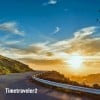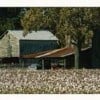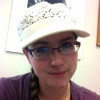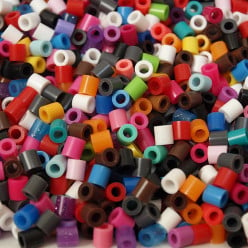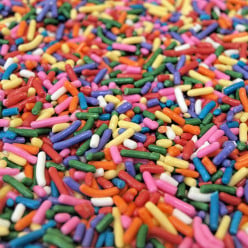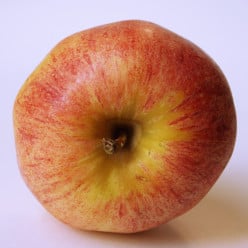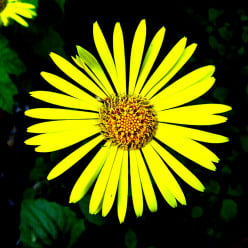How do you organize your articles and photos on your computer?
- Jennifer Sucheyposted 12 years ago
0
The more the number of articles and photos I have increases the more I realize I need to think through the best way to organize them. I currently my blog and HubPages, but will add more sites eventually. I have both content and photos separated by which site they are on, however, sometimes I want to use a photo from one for the other, so I'm thinking photos should not be separated by where I used them, but maybe by category. Yet one photo could be so many different categories.
As for content, I'm thinking of eliminating the folders for which site they are on and putting them in one "article" folder, and separated by category within that folder. To easily see which site they are posted on, I'm thinking of adding HP or BM to the file name so I know if it was used for HubPages or my blog, Blissful Miss.
What do you guys do? Some of you have hundreds if not thousands of articles and photos.Although I am new to Hub, I have written articles for other sites; created a web site, authored a recovery based curriculum with participant and facilitator manuals – with clip art/photos, and several other publications. It doesn’t take long for these to get either too large, or just “lost.”
I now have a separate USB stick for each site. I write on my machine; labeling the clip/photo to correspond to the article, but if it is one that I know I will use again, will make what appears to be a long file name for the JPEG; example: “Hitting a brick wall in recovery happens when……..– for an addiction article, but if it’s just a good picture for other barriers, it becomes “Person hitting brick wall” which then goes on my Pictures stick.
Since it’s either impossible to print the contents, or I just don’t know how, before I send a new one to the stick, I name/label it “Z Person hitting brick wall” , then it shows up last on the list.
When I’m finished with that article for the day, I Snag the pictures/photos I’ve added, copy and print and it goes into the Ziploc for that stick.
I am sure there are other methods and hopefully you’ll get some responses and I can be educated, too, but this currently works for me.I use HP's photos and also save photos on a flash drive. I label them in categories such as "scenery", "people", "love" or whatever. If you use the HP photos, once you've used them they are automatically saved along with their attributions. So when I hit "my photos" and then hit the category I want, any photo that comes up is already pre marked. My system is really pretty easy.
Thanks for all your input, guys. I have a plethora of ideas to work with now.
 I'm sure others are appreciating reading your organizing methods as well.
I'm sure others are appreciating reading your organizing methods as well.
I have just started using Google's Picasa for my photos and am very pleased. It lets me organise the photos in folders and also to assign tags to each individual photo. It also lets me do some basic editing so I do not have to pay out for expensive software like Photoshop.
I open a Notepad text document and paste the attribution of the picture, where I got if from and where I used it. I name the document with the month and year so I keep editing the same document for the entire month.
Pictures are saved into folders and sub-folders and labeled according to how and where they were used... Hubpages, Squidoo.. Herbal Blog, etc... I name the pictures with the keyword I used them for.
Posts and hubs are saved the same way... where and when.The beauty of Picasa is that I can keep pictures in a folder such as "allaboutwales.com" but then I can tag each picture separately, so if I tag a picture as "Welsh music", "harp", "Welsh triple harp", "folk music", should I wish to write an article on Welsh music, or harp music or folk music, I can search on Picasa and retrieve the same picture for use again.
I keep my hubs organised by Hub groups, with a folder for each group. I store the text for my hubs in Word documents in the group folders. I zip up all the photos for each hub and have a zip for each hub. My photos are almost entirely my own, so I have no need for attribution notes.
Finally, I have a notepad file that keeps track of the hubs I am working on and also keep ideas for hubs there too.I use a HubPages folder, then subfolders are
1. Potential Articles for notes (I also have a bookmark with that name for links that I might want to read again).
For articles I'm working on or have finished, I have
2. Added and
3. Not Added.
In the Added folder, I have a Pictures folder. Every article or picture is named by it's main reason for being, like "Milk" followed by a dash and the article title or a picture name.
I write my hubs in Word, and I place all links to pictures and references at the bottom of the article so I know where they originally came from. For picture links, I have not only the link but the photographer and the permission in the Word document as well as a little line about which picture it would be if I was looking at the hub.
When I publish the hub, I move it from the Not Added to the Added folder. By that time I've already downloaded the pictures and published them, so they are in the Added\Pictures folder.
When I'm adding my Word hub to HP, I first copy the text to Notepad to remove any stray formatting or characters that could cause formatting problems.
So far, this method seems manageable for me.I use folders for photos I name them, wildlife etc. After I name them and I save them in an external hard drive. I also add them to a folder with month and year of the photos. I put my text for Hubs on word and save it in folders and also move them to external hard drive. Everything I have goes into two external hard drives. I also move photos into a folder called Hubs so I know what photos I have used on HubPages. Ideas I have for hubs are in folders in my documents and I don't move them completely out of there until I have placed them in Hubpages but there is always a copy of them in my external hard drive.
We get lots of lighting that seems to hit our house and we have lost computers, TV, phones and cd players. I have never lost an external hard drive but I also don't trust them so I have two. I know I’m paranoid.I usually just press save as and do a keyboard smash. Names like dbutsvf.jpg and cgzisitsho.png are common...
- delleaposted 12 years ago
0
Once I have written articles, I seldom keep copies on my computers. I figure that once they've been posted here at HP or in one of my web sites, they are out there in the cloud and I have no need to keep copies on-hand. It's kind of the same with images for me, but I do regularly use images from other sites and I cite or link where they come from, and the images and photos I do myself I normally upload to sites with posts, so again I have little need to keep them on my computers.
In contrast...
My wife and I do keep family and trip photos, and we store them in a central photo directory in my main server (which has dual daily backups). This way each of us can access any of the photos we wish whenever we wish. We organize our photos under general folders (such as trips, family, etc) and then usually under more specific subfolders by date.
My wife and I have also done the same with our MP3 music collection as well, however it took us years to do so because we organize our music in different ways. I prefer to organize mine by artist, but she prefers by genre. We sort-of merged our entire libraries together, except my name is a folder in her genre list and my music is still organized by artist under my folder. That being said, despite the different folder structures, all the music is in a shared music folder on the server which makes name searching for songs very fast and simple.
Where your own article storage is concerned, I would say maybe create subfolders by general topic, then simply have the articles ordered by name under said topics. You could also store article photos in the same folders, and simply rename the photos to match the name of each article followed by (1), (2), etc if articles have multiple photos. This way, if you sort the folders by name, the articles and article photos will be listed together. Just a thought. I am very, very new to hubpages, but I started out by writing down ideas for articles. Then I typed up an outline in open office writer. After I have an outline, I start a new hub and write it into the hub. I only save the actual article for myself after the hub is published. I don't have that many files yet, but I think I'll end up with two folders: one for completed articles and one for outlined ideas.
I don't store them on my computer for long. If something were to go wrong, they would be gone. I use an external hard drive and cloud storage for my photos.
Related Discussions
- 21
Where do you save your articles?
by peachy 10 years ago
Where do you save your articles?I always save my articles before I publish online in my pendrive and then make a backup copy in the hard drive and external hard drive. 3 tasks before I shut down the laptop. Do you save your articles in your hard drive? What if it crashes?
- 16
Hardcopies of Articles.
by Eugene Brennan 4 years ago
How many of you have hardcopy printouts of your articles? I don't yet, but I need to make some. It's the only reliable backup method.
- 14
Do you guys back up your hubs?
by Paz 12 years ago
Do you guys back up your hubs?Hey guys, do you guys back up your hubs locally? I'm kinda wondering if I should. Granted, I only have made a few, but I guess it's never too soon? Also, if you do back up your hubs, how do you do it?
- 17
Should we need backup of our data
by Sunil Kumar Kunnoth 11 years ago
I am often worried of losing data on computer. My worry is very much same on the hubs I wrote. Should a hubber keep backup of his data? If we have a backup, we can meet any eventuality that may arise in future and be on a safe wicket. After all these are all machines, I mean...
- 22
Make a new folder for photo's
by Joanna 6 years ago
Okay, I know, retard alert! I've been working on Hubpages for, oh my, a long time alright (5 maybe 6 years). I've created folders for my photo's in the past. I cannot, for the life of me. figure out how I did it?! My photo's are getting out of hand. I need to make more folders for...
- 9
I'd like feedback on my article: How to Test Your Fertility at Home
by Jackie Grant 8 years ago
Hi Hubbers,I'd like some help with passing the Quality Assessment Process. Will you please give feedback on my article How to Test Your Fertility at Home. What can I do to improve? Thanks!I have rewritten this article many times so this is my last resort. If I need to take out one of the amazon...


